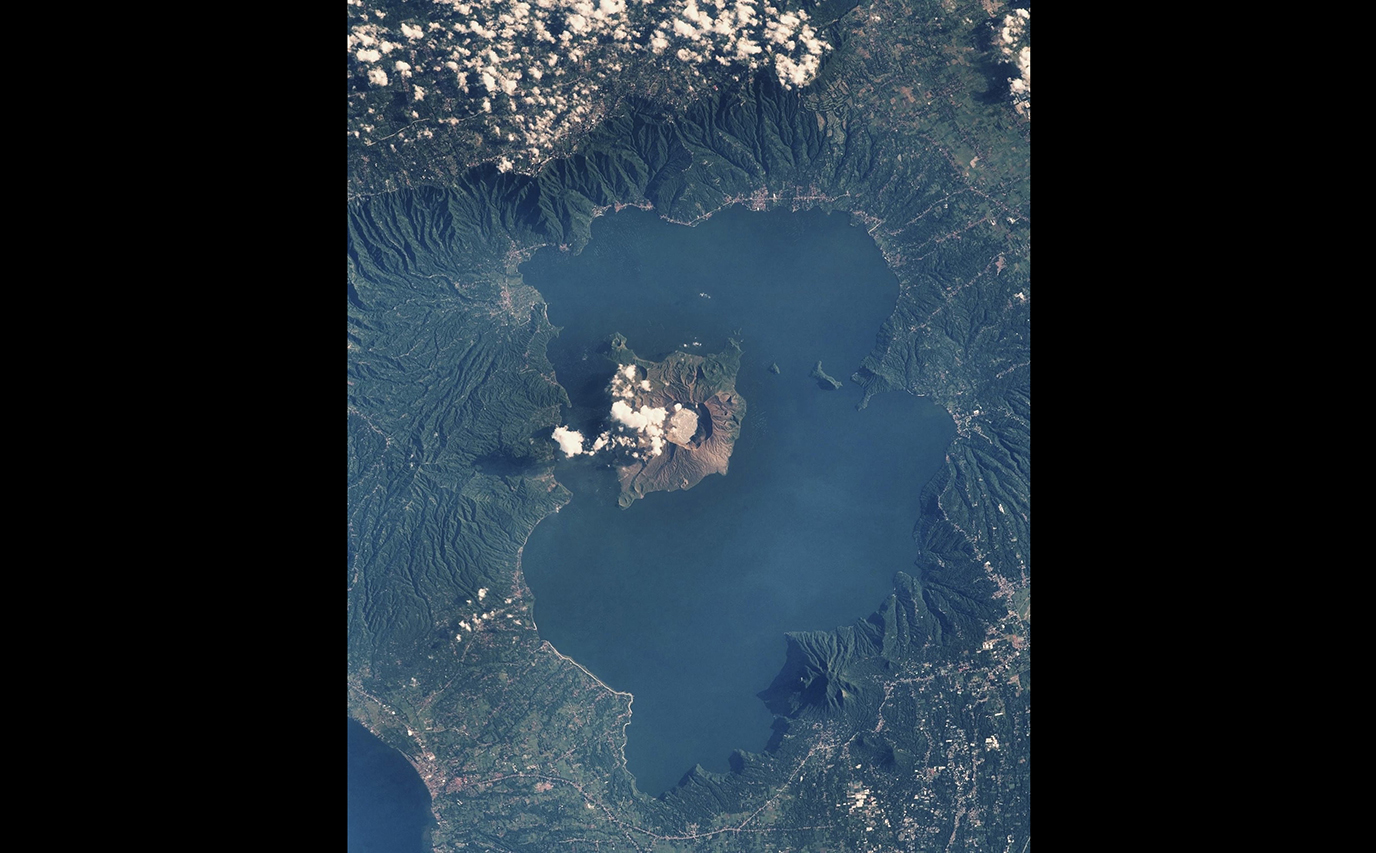Last year, I saw my home from outer space. It was in an image posted on Instagram and shot by an Emirati astronaut from the International Space Station.
Sultan Al Neyadi, the astronaut, posted dozens of photos of the planet during his six-month space mission, but only one image of the Philippines: Taal Lake in Batangas with its smoky, iconic volcano. In his caption, he said the unmistakable landscape exemplified the planet’s “unique geographical diversity.”
Along the lake’s jagged eastern shore I could discern the exact spot where my tiny property is, on the edge of a small cove where we can see from our house the nipple-like peak of Napayong Island, just behind the strip of mainland that forms the other end of the cove.
It’s a place that I now associate with the meaning of “terrible beauty.”
The paradoxical phrase suggests something that can be both breathtaking and horrific at the same time. It’s an expression famously used by the Irish poet W.B Yeats.
What the astronaut saw as simply unique is an environment I’ve been immersed in for the past 12 years.
Taal Lake is where I learned to kayak long distances to explore its nooks and crannies. It’s the heartland of the Filipino ancient script Baybayin, which I taught myself and now teach others in the same location where ancestors used Baybayin to write poetry.
But Taal Lake is also a place my family had to flee when the volcano erupted in January 2020, when the ash forced us to wear masks weeks before the pandemic forced everyone else to do so. The eruption turned the lushly green Volcano Island into a grey, sprawling mass on the horizon.
We returned when the volcano calmed down and just in time to be locked down by Covid. It was our refuge from the virus, a place with fresh air and a healthy environment.
But when Taal acts up, causes tremors and releases sulfuric gases, making us cough, we run away from it again. And again.
In its long history, the volcano has repeated that cycle of driving away lakeside inhabitants and changing the landscape. The balmy, elevated city of Lipa was a lakeshore settlement for centuries before the 1754 eruption that finally forced it to relocate to the plateau above.
But new settlements keep forming to take the place of exiles. As anyone who has seen the island within the lake from Tagaytay knows, the scenery is irresistible. But most lakeside residents are drawn by the fertility of the volcanic soil coupled with the abundance of the lake’s tasty fish, including the endemic tawilis, the only freshwater sardine species on the planet.
Recent events have reminded us anew of the terrible side of this beautiful cornucopia.
A storm named Kristine brought a historic rainfall last month and triggered disastrous landslides that never happened before in local memories. Heavy lahar deposits from volcanic eruptions came barreling down in several lakeside towns and killed dozens of residents.
Traumatized communities still reeling from Kristine are awaiting at this moment a super typhoon named Pepito.
With a climate gone crazy, this type of relentless suffering may be the new normal for people living in a region with multiple risks.
Our region in Batangas is a dramatic example of what many beautiful places in the Philippines face: A future clouded by extreme hazards.
The yin and yang of terrible beauty will force relocation to safer environs while luring new risk takers hungry for opportunity. It’s a trend that can be foreseen and managed.
The Philippines is a bewildering paradox — a land of immense problems, but also a land that many of us love so dearly. Even from outer space, it’s easy to see why.
Veteran Kapuso journalist H. Severino writes occasional reflections for this website under a column entitled, “Essay.” In 2023, he was given the Gawad Balagtas, a lifetime literary achievement award given to Filipino writers by the Unyon ng mga Manunulat sa Pilipinas (UMPIL), the country's largest organization of Filipino writers.



